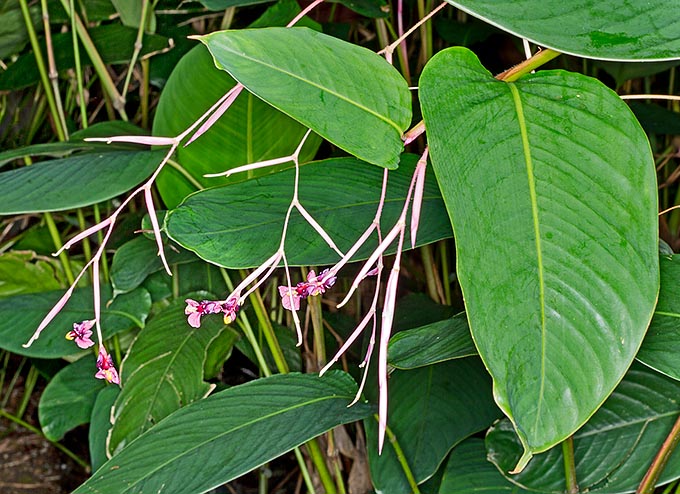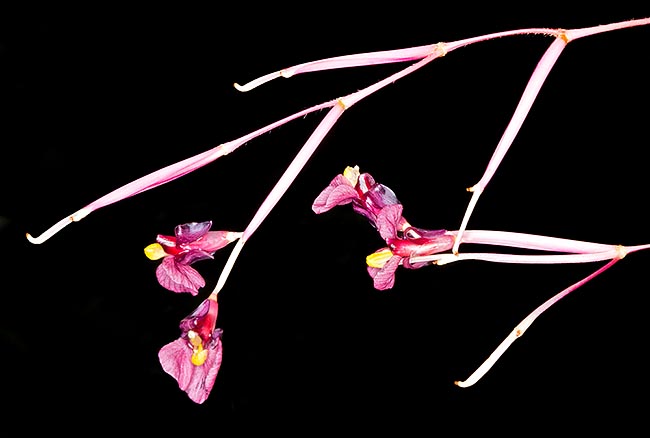Family : Marantaceae

Text © Pietro Puccio

English translation by Mario Beltramini

Marantochloa purpurea is a perennial rhizomatous, tropical herbaceous plant forming 1-4 m tall tufts © Giuseppe Mazza
The name of the genus is the combination of Maranta, genus honoured to the Italian physician and botanist Bartholomaeus Marantha (1500-1571) and of the Greek substantive “χλόη” (chloe) = grass; the name of the species is the Latin adjective “purpureus, a, um” = purpureal, with reference to the colours of the flowers.
Common names: yoruba soft cane (English); canne molle, feuille du kola (French).
The Marantochloa purpurea (Ridl.) Milne-Redh. (1950) is an evergreen, perennial rhizomatous herbaceous species, with ramified stems, forming dense 1-4 m tall tufts. The leaves, on an about 90 cm long petiole, sheathing at the base for a length of about 40 cm, are alternate, ovate, with long pointed apex, asymmetrical in respect to the central nervation, 15-40 cm long and 10-18 cm broad, of green colour above, with purple shades below. The inflorescences are ramified, loose, up to about 45 cm long, with pink rachis and about 4 nodes in each ramification provided of 2-4 cm long pink bracts.

The ramified and loose inflorescences, even 45 cm long, have 1,8 cm hermaphroditic flowers © Giuseppe Mazza
It almost exclusively reproduces by division of the rhizome with each section provided of several vegetative buds.
Little diffused out of the origin zones, where is normally collected in nature or planted in the forests close to the villages, requires a humid tropical or subtropical climate and exposition in full sun or partially shaded and is not particular about the soil. The stems are amply utilized for making baskets, ropes, brooms, mats, fish traps and other everyday objects and the leaves, taken fresh every day from the forest to the markets, for wrapping foods and the kola nuts in order to avoid their drying. Various parts of the plant are used since yore in the traditional medicine for several pathologies.
Synonyms: Clinogyne purpurea Ridl. (1887); Donax arillata K.Schum. (1892); Donax purpurea (Ridl.) K.Schum. (1892); Clinogyne arillata (K.Schum.) K.Schum. (1897); Clinogyne baumannii K.Schum. (1902).
